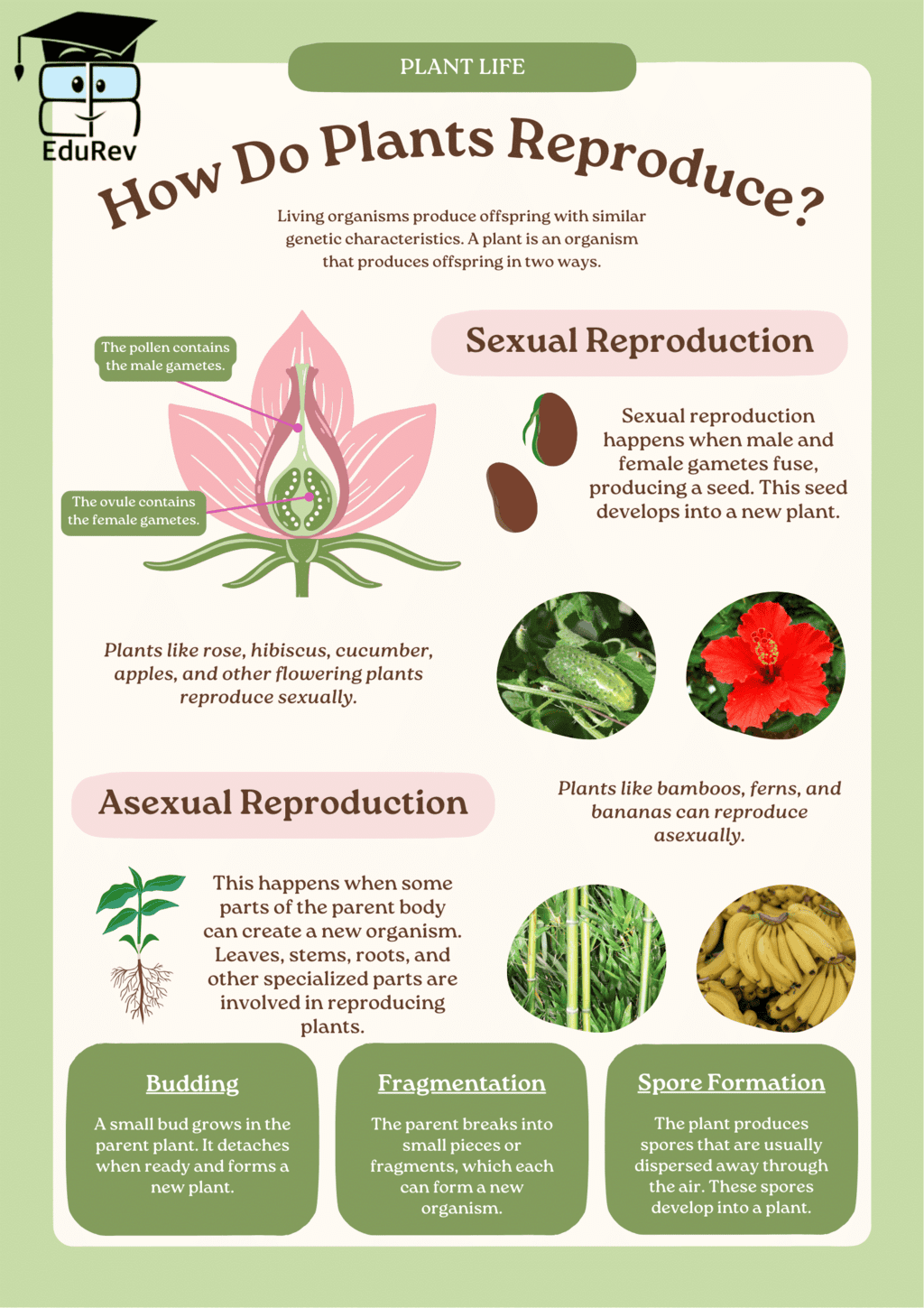Class 5 Exam > Class 5 Notes > Science Class 5 > Learning Poster: Plant Life
Learning Poster: Plant Life | Science Class 5 PDF Download

The document Learning Poster: Plant Life | Science Class 5 is a part of the Class 5 Course Science Class 5.
All you need of Class 5 at this link: Class 5
|
42 videos|362 docs|45 tests
|
FAQs on Learning Poster: Plant Life - Science Class 5
| 1. What are the main parts of a plant and their functions? |  |
Ans. The main parts of a plant include the roots, stems, leaves, flowers, and fruits. The roots anchor the plant and absorb water and nutrients from the soil. Stems support the plant and transport nutrients and water between the roots and leaves. Leaves are primarily responsible for photosynthesis, converting sunlight into energy. Flowers are the reproductive structures that produce seeds, while fruits protect the seeds and aid in their dispersal.
| 2. How do plants perform photosynthesis? |  |
Ans. Plants perform photosynthesis by using sunlight, carbon dioxide from the air, and water from the soil to produce glucose and oxygen. This process occurs mainly in the leaves, where chlorophyll captures sunlight. The absorbed light energy converts carbon dioxide and water into glucose, which serves as food for the plant, while oxygen is released as a byproduct.
| 3. What are the different types of plants? |  |
Ans. Plants can be classified into several types, including flowering plants (angiosperms), non-flowering plants (gymnosperms), ferns, mosses, and algae. Flowering plants produce flowers and seeds, while non-flowering plants reproduce through seeds that are not enclosed in fruits. Ferns reproduce via spores and have distinct fronds, while mosses are small, non-vascular plants that also reproduce by spores. Algae are simple aquatic plants that can perform photosynthesis.
| 4. Why are plants important to the environment? |  |
Ans. Plants play a crucial role in the environment as they produce oxygen through photosynthesis, which is essential for the survival of most living organisms. They also help in carbon dioxide absorption, reducing greenhouse gases. Additionally, plants provide habitat for wildlife, stabilize soil, prevent erosion, and contribute to the water cycle by facilitating transpiration.
| 5. How do plants adapt to their environment? |  |
Ans. Plants adapt to their environment through various physical and behavioral changes. For instance, desert plants often have thick, waxy surfaces to reduce water loss, while some plants have deep roots to access underground water. Others may have modified leaves, like spines, to deter herbivores, or they may exhibit seasonal changes to survive extreme weather conditions. These adaptations enhance their survival and reproduction in diverse habitats.
Related Searches

















